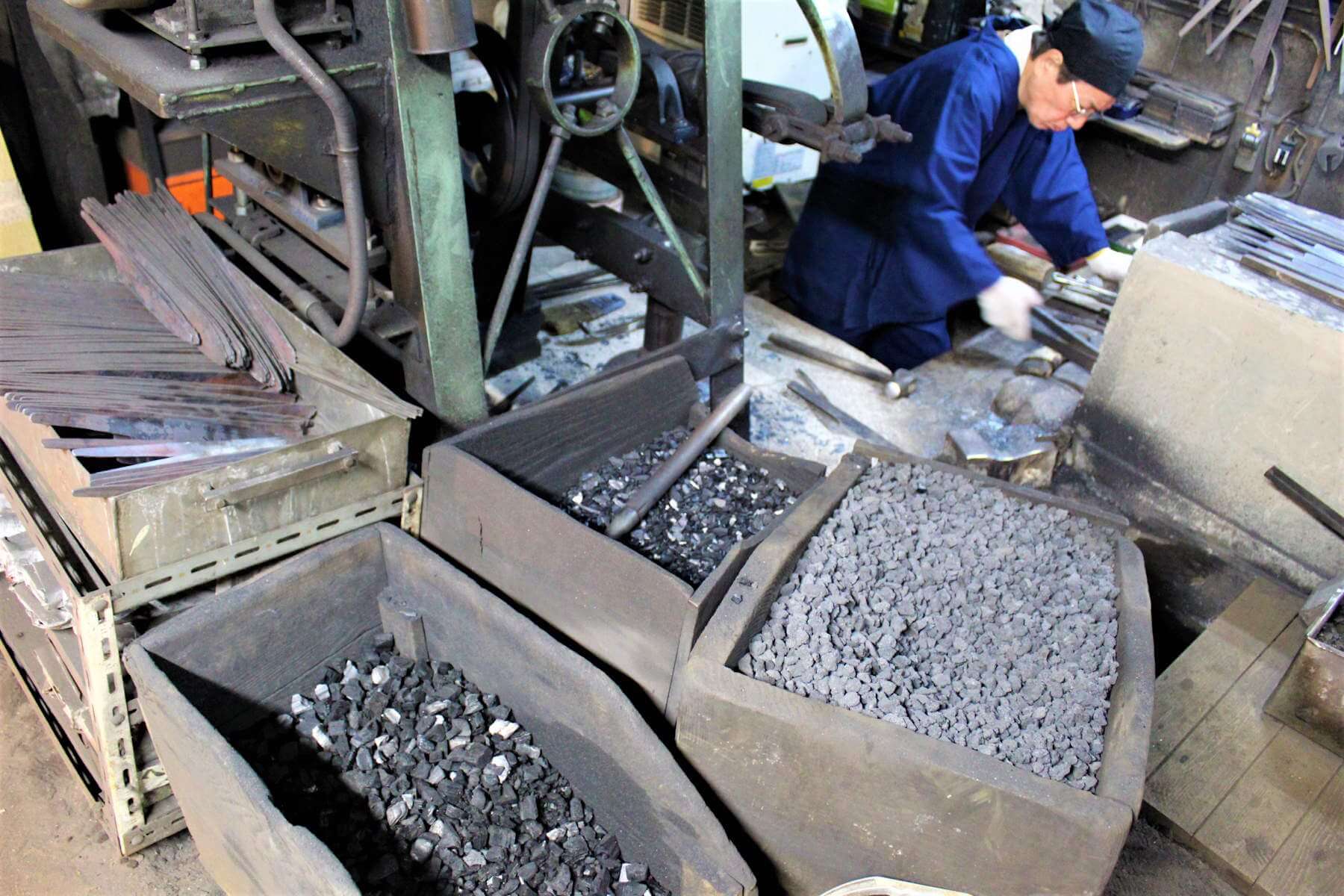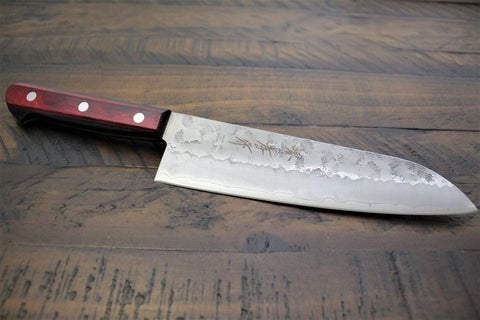Any culinary journey worth its salt will inevitably lead you to Japanese knives. Much like your trek through the vast world of cuisine, Japanese knife-making is a process refined by generations of artisans. The results speak for themselves: centuries of tradition, artistry, and dedication flow through each razor-sharp blade.
Understanding the heritage of traditional Japanese knives adds a new dimension to your kitchen skills. Appreciation for these tools and the time-honored tradition of their creation is inspiring, opening your world to even more flavors and textures.
The legacy of these knives also provides guidance when searching for new cutlery. Though the world of Japanese knives may seem daunting, understanding their history and craft helps simplify the decision-making process.
To help educate and inspire, let’s explore the history, design, process, and materials of hand-forged Japanese knives—from their origins in ancient swordsmithing to their role in today’s kitchens.
Japanese Knife-Making History
The Japanese knife-making process began with the ancient craft of sword-making. For centuries, swordsmiths manipulated steel into katanas wielded by samurai. Their artistry remains a vital part of Japanese cultural heritage, with many regions tracing their roots in swordsmithing back over a thousand years.
In the late 19th century, during the Meiji Restoration, samurai culture faded and demand for swords declined. However, these skilled artisans adapted. Applying the techniques and metallurgy once used for weapons, blacksmiths began crafting traditional Japanese knives, establishing a new legacy of excellence.
Today, nearly 90% of professional chefs worldwide use Japanese blades. Their balance of precision and power makes them a welcome addition to any kitchen.
The Sakai Knife-Making Process
Artists in Sakai have refined their knife-making traditions for over 600 years. By the 16th century, Sakai became renowned for producing specialized tobacco-cutting knives—skills rooted in metallurgical advances from the 5th century.
- A blacksmith forges the blade.
- A sharpener shapes and refines the edge.
- A polisher finishes the surface, sometimes through more than 60 steps for premium knives like the Honyaki.
This collaborative process is why hand-forged Japanese knives remain unmatched in quality and performance.
Explore authentic Sakai knives crafted by master artisans.
For some knives, like the high-end Honyaki, the polishing process requires over 60 steps.
Types of Japanese Kitchen Knives
Japanese kitchen knives come in two primary design styles, each with unique advantages. Understanding the types of Japanese kitchen knives helps you choose the right tool for your cooking style.
Western-Style Japanese Knives
- Feature a full tang that runs through the handle.
- Double bevel blade (sharpened on both sides).
- Balanced, familiar feel—ideal for beginners.
- Example: the versatile Santoku knife.
Traditional Japanese Knives
- Partial tang with oval or octagonal wooden handles.
- Single bevel blade, chisel-like in design.
- Crafted for precision, with dedicated right- or left-handed use.
- Preferred by professionals for specialized tasks like sashimi slicing (Yanagiba).
Discover the full range of types of Japanese kitchen knives available at Hasu-Seizo.
Japanese Knife Steel Types
From swords to kitchen knives, the craft has always centered around high-quality steel. Great chefs know a knife should feel like an extension of their body, and steel quality makes that possible.
Stainless Steel
- Alloy with a high chromium content.
- Resistant to rust and corrosion.
- Low maintenance, making them excellent for beginners and home cooks.
High-Carbon Steel
- Higher carbon content for sharper edges and superior retention.
- More brittle and prone to rust if not properly cared for.
- Favored by chefs who value performance and are willing to maintain their tools.
Compare Japanese knife steel types to find your perfect fit.
Final Word on the Japanese Knife-Making Process
The Japanese process of making knives is unparalleled—anchored in history yet alive in today’s kitchens. Each time you pull a blade from its saya, you’re holding centuries of craftsmanship and cultural legacy.
With their balance of hand-forged artistry and innovative design, these knives preserve the natural flavors of ingredients and elevate everyday cooking. It’s no wonder they are the blade of choice for chefs across the globe.
For more details, shop Hasu-Seizo’s selection of authentic, hand-forged Japanese kitchen knives:





